flexible
Latest

Breakthrough could help you 3D print OLED screens at home
Scientists have built a fully 3D-printed flexible OLED display that might let you make your own screens.

'Atomically thin' transistors could help make electronic skins a reality
Stanford researchers have developed 'atomically-thin' flexible electronics that could make electronic skin (and new implants) practical.
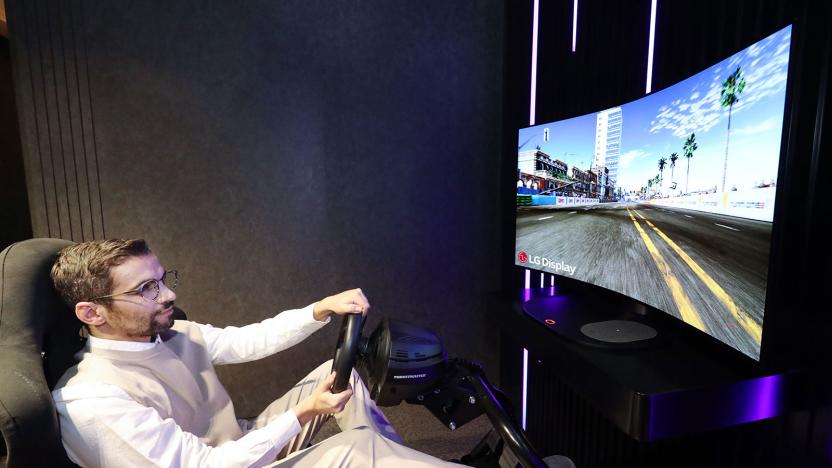
LG will demo a 'bendable' OLED gaming TV at CES 2021
At CES 2021, LG Display will be showing off a 48-inch “Bendable CSO (Cinematic Sound OLED) display” that can switch between a flat screen and a curved screen.
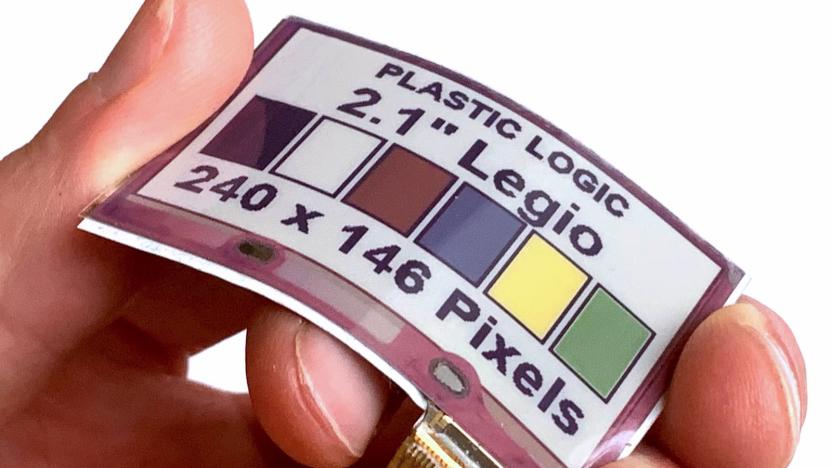
Flexible color ePaper displays could soon adorn your clothes
Plastic Logic is making glass-free panels based on E Ink's ACeP tech.
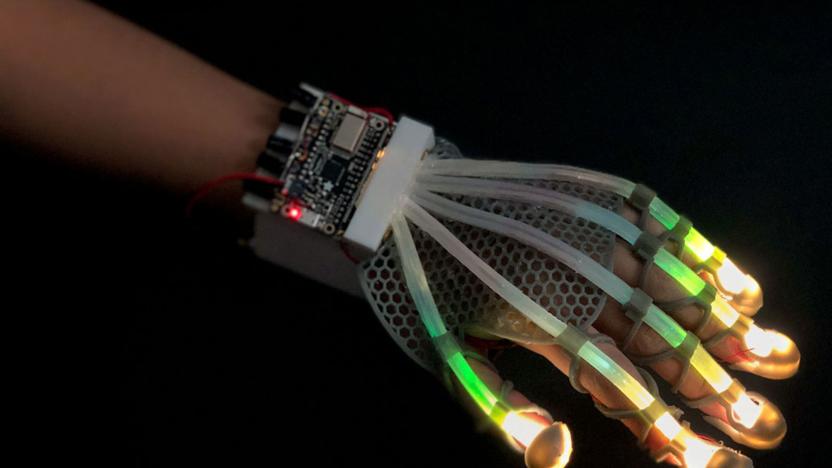
Stretchable skin sensor could help you touch things in VR
Cornell researchers have made a stretchable skin sensor whose light-based approach could bring human-like touch to VR and robots.
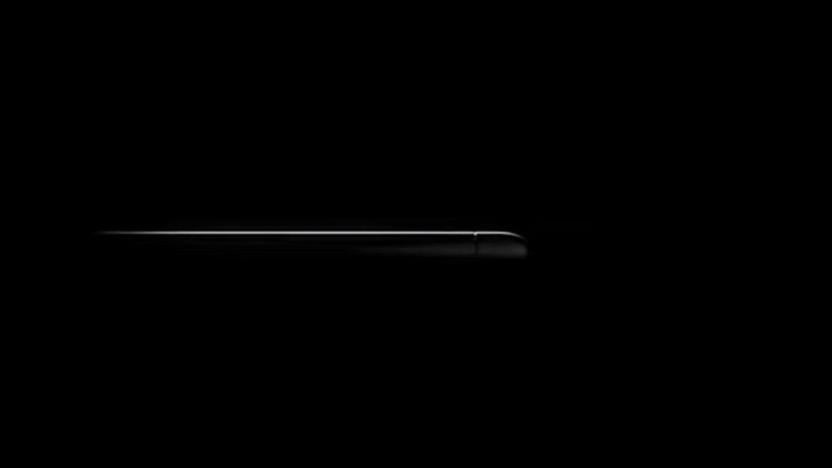
LG teases an ‘Explorer Project’ phone with a slide-out display
LG's second phone could look at lot like TCL's rollable sliding smartphone.

Sticker sensor monitors your body using wireless power
Wearable body sensors have a common problem: they need power and antennas, and all that equipment leads to bulky devices that influence your behavior. Stanford researchers, however, have developed a system that could be almost imperceptible. Their BodyNet sticker sensor gathers power and transmits data using an RFID connection to a receiver on nearby clothing, making the sensor itself about as comfortable and flexible as an adhesive bandage. It measures subtle changes in skin that provide a wealth of data for the body, whether it's your heartbeat, breathing rate or muscle activity.
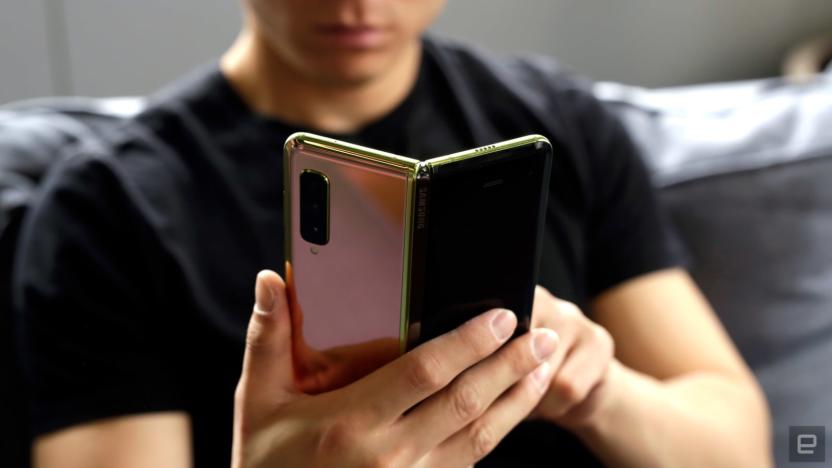
iFixit pulls its Galaxy Fold teardown at Samsung's request
The Galaxy Fold won't make its planned launch date as Samsung looks into problems experienced by several reviewers with test units. In the meantime, the folks at iFixit did what they do best and pulled one apart, but on Thursday explained their choice to "withdraw" the teardown. While iFixit usually gets a device specifically for the purpose of pulling it apart, this one was apparently provided by a third party. Samsung then asked that "trusted partner" to have the teardown removed and iFixit -- while insisting it didn't have to -- acquiesced to keep the peace. iFixit called the device it undid "alarmingly fragile," but also noted in today's post that "Our team appreciated the chance to look inside this ambitious device. All new products face challenges—this one perhaps more than most." We still don't know exactly what Samsung might tweak before the Galaxy Fold is rescheduled for a proper retail launch, but it's possibly that the company doesn't want to expose problems, or any secrets before the thing is actually on sale. Either way, the teardown is out there now, and preserved in the Internet Archive if someone really wants to what a Fold test unit has inside and, perhaps more importantly, what it might lack in protection that would allow debris inside.

Samsung speaks up about broken Galaxy Fold review units
Even after extensive durability testing, reports surfaced yesterday that several Galaxy Fold reviewers had already suffered from broken devices. It appears they're experiencing more than one type of issue, mostly tied to the device's innovative folding display technology, and in a statement released tonight Samsung said it "will thoroughly inspect these units in person to determine the cause of the matter." According to Wall Street Journal reporter Joanna Stern, the Fold's planned April 26th launch is still on with no hint of a delay.

Samsung's 'unbreakable' display survives UL scrutiny
Phone makers have promised unbreakable phone screens for years, but they tend to involve awkward compromises like soft, scratchable surfaces. Samsung Display might just fulfill that promise, though. Underwriters Laboratories certified an "unbreakable" Samsung panel (not yet pictured) as capable of surviving military-grade durability tests without damage. This included dropping it 26 times from a height of four feet and subjecting it to extreme temperatures. It even survived a drop test at 6 feet without any battle scars. Update: Samsung Display posted a video of its new screen, showing how its lightweight plastic cover compares to traditional glass. In the video it survives several strikes from a hammer with no damage to show for it.

O2's flexible plans let you change your data allowance each month
When signing a new mobile contract, you typically pick a monthly plan with strict call, text and data allowances. You're then tied to that decision as you see out the contract for the next two years, before starting the process all over again. With O2's new flexible tariffs launching tomorrow, however, you can jump between different plans each month, shrinking or growing your data allowance, and thus how much you pay that month, too.

Samsung wants to launch a foldable Galaxy Note in 2018
Samsung's much-rumored foldable smartphone has been in the pipeline since the company first debuted its flexible display prototype, Youm, in 2013. Now the Korean tech giant says the almost-mythical device could launch next year under its Galaxy Note brand. Emphasis on the "could", though, as Samsung president Koh Dong-jin has been sure to mention the hurdles that stand in the way. Speaking at a news conference announcing the Galaxy Note 8, he said of the foldable smartphone, "I can say our current goal is next year. When we can overcome some problems for sure, we will launch the product."

Lenovo laptop concept flexes like a yoga mat
Lenovo isn't done making exotic concept devices... far from it. The PC maker has unveiled a laptop concept whose centerpiece is a flexible screen that runs right up to the keyboard. It's not joined by a hinge, it is the hinge -- you'd fold it up like a yoga mat, or maybe Microsoft's Surface Book. It wouldn't have a trackpad, but you could write on it and speak to it. There's no guarantees that Lenovo will build it (the company tells us that there's no hands-on time "yet"), but we wouldn't rule it out at some point in the future, either.

Samsung's extra-stretchable display can survive dents
Flexible displays are nothing new. However, most of them don't live up to the dreams of flexible tech -- they may only bend in a limited way. Samsung thinks it can do better. It just unveiled a 9.1-inch prototype OLED display that's stretchable in seemingly every way imaginable: you can bend, roll and even dent it (up to half an inch deep) knowing that it'll revert to its original form. The technology is still very young, but Samsung believes the stretchy screen will be useful for everything from wearables to in-car displays. Imagine a very thin smartwatch that can take some knocks without smashing into pieces.
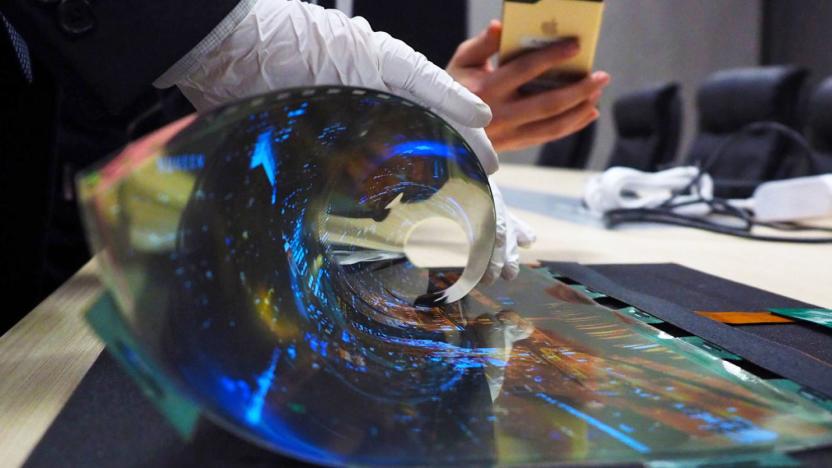
Graphene is the key to tougher flexible OLED displays
You can already find flexible displays in your phone or smartwatch, but there's a good reason you don't find them everywhere: the transparent electrodes in many OLED screens are too fragile to take a lot of abuse. That might change in the long run, though. South Korean researchers have made the first OLED panel that uses graphene for its electrodes. The hyped wonder material is both flexible and shouldn't chip, which is more than a little important for a display that you're going to bend and twist. This will ideally lead to displays woven into your clothes, or next-generation wearables that can take a lot of punishment.

Your clothing could soon have stealthy heart rate sensors
You might not have to wear a smartwatch or a dedicated monitor to track your heart rate in the future -- you might only need the clothes on your back. Scientists have developed polymer optical fibers that are flexible enough to be woven into clothing, enabling sensors anywhere your outfit meets bare skin. And did we mention they're washing machine friendly? You could theoretically slip on an everyday shirt or cap to track your BPM, and you could toss it in with the rest of your laundry at the end of the day.
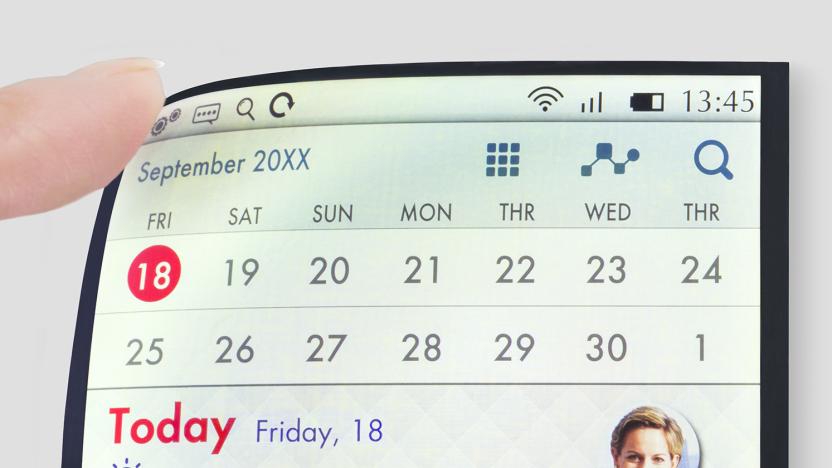
Japan Display battles Samsung's OLED with curved LCD screens
One of Apple's main screen suppliers, Japan Display Inc. (JDI), has revealed a 5.5-inch LCD smartphone screen that can be bent like OLED displays from Samsung and LG. While not quite as flexible and thin as OLED, the "Full Active Flex" 1080p screen could be used in phones with curved screens like the Galaxy S7 Edge, the company told the Wall Street Journal. LCD is a lot cheaper than OLED, so you could see a lot more curved phone designs when it starts manufacturing the panels in 2018.

You can cut this display with scissors
Want a display that can take any shape? You might not need a factory to cut it for you in the future -- you may only need a pair of scissors and a steady hand. Japan's National Institute for Materials Science has developed a flexible, organic/metal hybrid polymer display that you can cut without wrecking it. The technology only needs a few seconds of power to adjust to its new shape, and it even maintains its last information when you switch it off, a lot like e-paper.
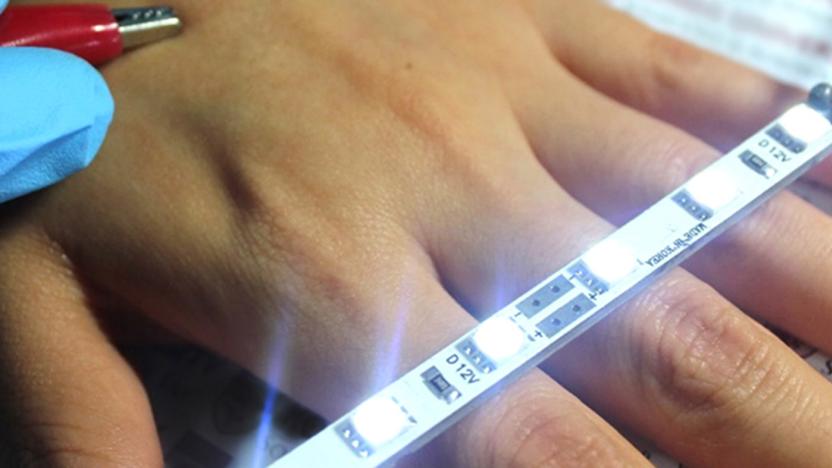
Nanofiber film could lead to electronic skin
If you want electronic skin or other transparent wearable devices, you need to send a current through that skin. However, it's hard to make something that's both conductive and transparent -- and that's where a team of American and Korean researchers might save they day. They've developed a nanofiber film that's 92 percent transparent, but has electrical resistance that's "at least" 10 times better than the previous best. You create it by electrospinning polyacrylonitrile (a polymer resin) until it forms a mat, spatter-coat it with metal and then electroplate it. The result is a material that eases the flow of current but is mostly made up of see-through holes.

Graphene e-paper is brighter and bendier
Who said that e-paper was old stuff? Certainly not China -- the country's Guangzhou OED Technologies has created what it says is the world's first graphene-based e-paper. The extremely strong yet light material promises very thin screens that are both brighter and more flexible. You could get e-readers that are easier to read on a sunny day, for instance, or activity trackers that can put up with more abuse. It should even be less expensive, as graphene's carbon is much easier to find than the exotic indium metal you see in conventional e-paper.







